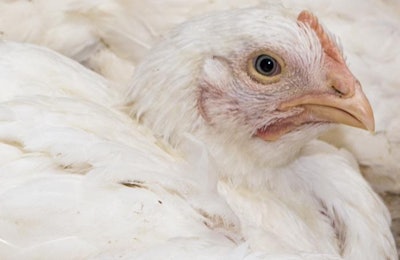
As of the end of last week, Taiwan had culled more than a billion birds so far in 2017 in a bid to control the spread of highly pathogenic avian influenza (HPAI).
Other countries reporting new HPAI outbreaks in poultry to the World Organisation for Animal Health (OIE) in the last week include Malaysia, Vietnam, Japan, China, Nigeria and Cameroon.
There are early signs that the battle against HPAI may be being won in Europe.
Taiwan culls more than one million poultry in 2017
Latest information from the Council of Agriculture puts the number of outbreaks of HPAI in Taiwan at 112 this year, reported Focus Taiwan last week. More than 1,034,000,000 poultry have been destroyed to try to halt the spread of the virus.
The agriculture ministry in Taipei has reported 18 new HPAI outbreaks in poultry to the OIE over the last week involving the H5N2 virus variant. Ten of the outbreaks were in Yunlin county, while others were in the counties of Pingtung, Changhua, Chiayi and Kaohsiung, as well as Tainan city. Nine of the outbreaks were in flocks of native chickens, with the rest in ducks or chickens, with more than 236,700 birds being humanely destroyed following confirmation on the virus.
Almost 9,000 chickens died or were destroyed in Tainan city following the detection of the H5N8 subtype of the HPAI virus, according to another recent ministry report to the OIE.
More HPAI in Malaysia, Japan, Vietnam, China
Animal health authorities in Malaysia have reported to OIE a further 10 outbreaks of HPAI caused by the H5N1 virus variant. Like previous recent cases, the affected poultry are in the Kelantan region and in small backyard flocks, totaling 215 birds.
H5N6 HPAI has returned to Japan after a brief absence. OIE has been informed by the agriculture ministry about two new outbreaks in layer flocks in the east of Honshu island. These included 220,000 birds in Miyagi prefecture, and a further 68,000 layers in Chiba.
Almost 3,000 poultry in three flocks described as “backyard” have recently succumbed to H5N1 HPAI in Vietnam, according to an OIE report.
China has reported to the OIE its first outbreak of HPAI caused by the H7N9 virus family in the province of Hunan. The disease hit a flock of almost 190,000 poultry.
Africa: New outbreaks in Nigeria and Cameroon
Nigeria’s poultry sector has been fighting HPAI since early 2015, and a further six new outbreaks have been reported by the veterinary authority to the OIE in the last week. Three chicken flocks were affected in the state of Plateau, and a further three in the same district of Toro in Bauchi state. More than 16,700 birds died or were destroyed as a result of the disease, caused by the H5N1 virus.
The same virus family was detected in two recent HPAI outbreaks in Cameroon. The affected flocks, both of laying hens, were in the same district of Ouest.















